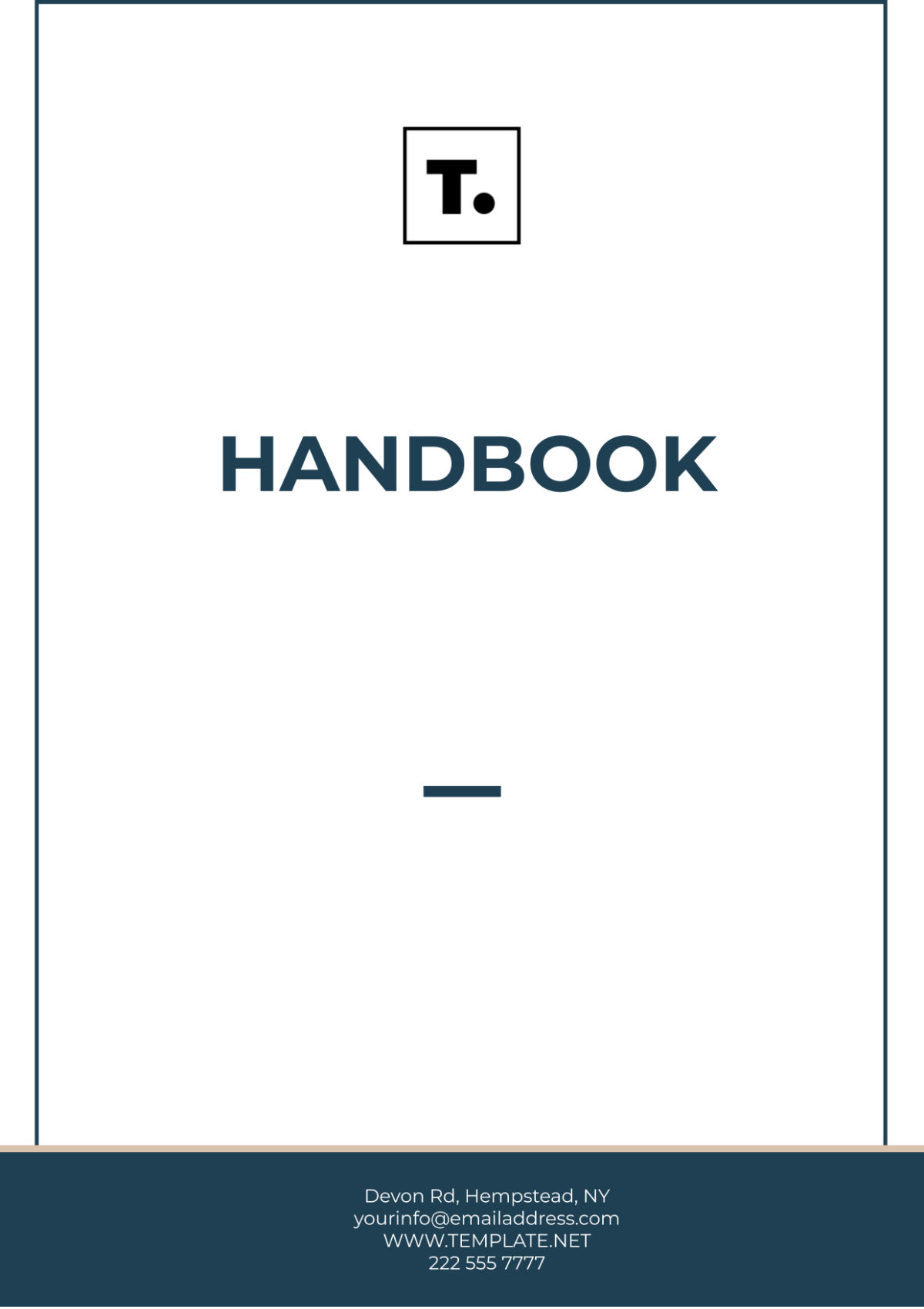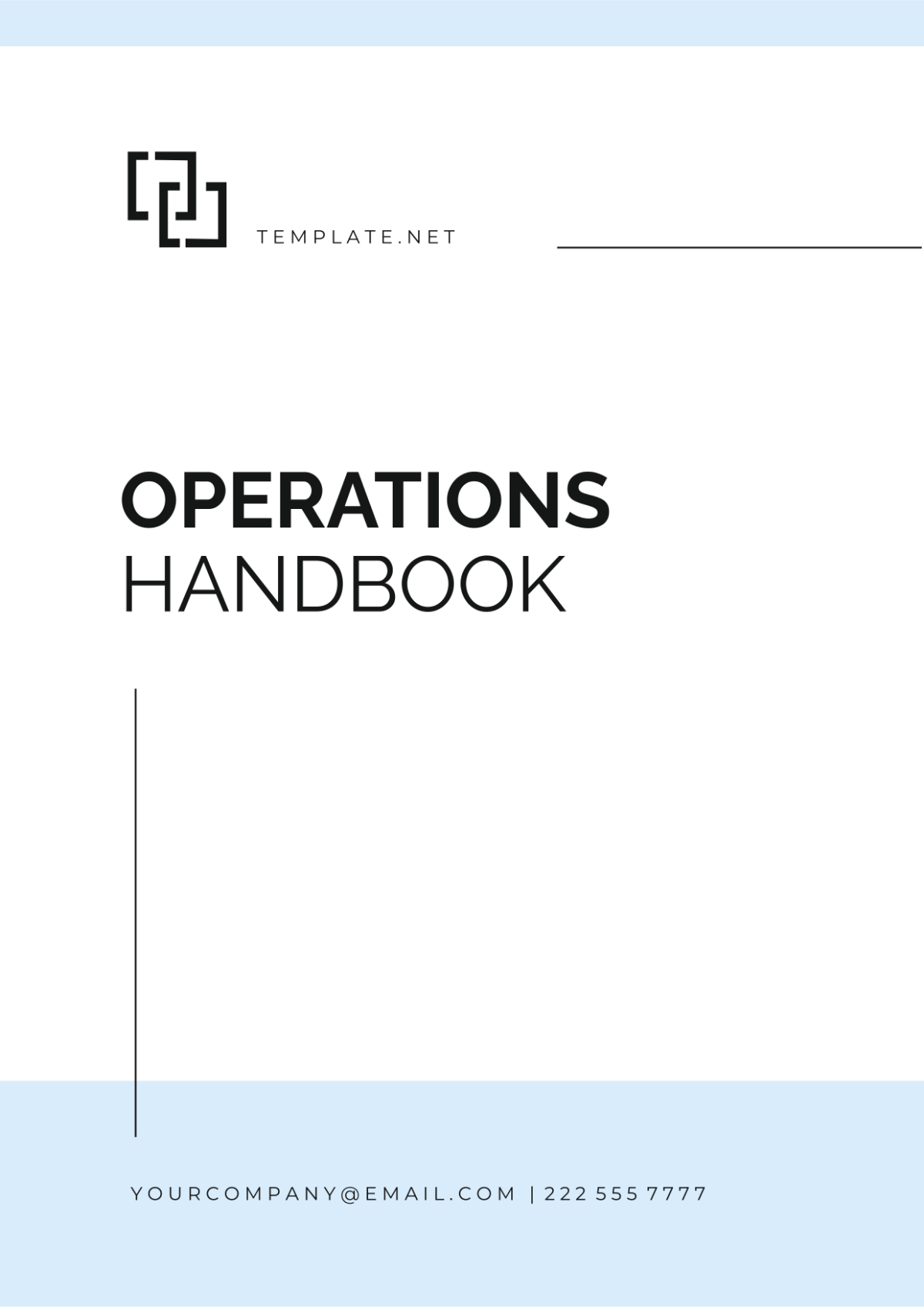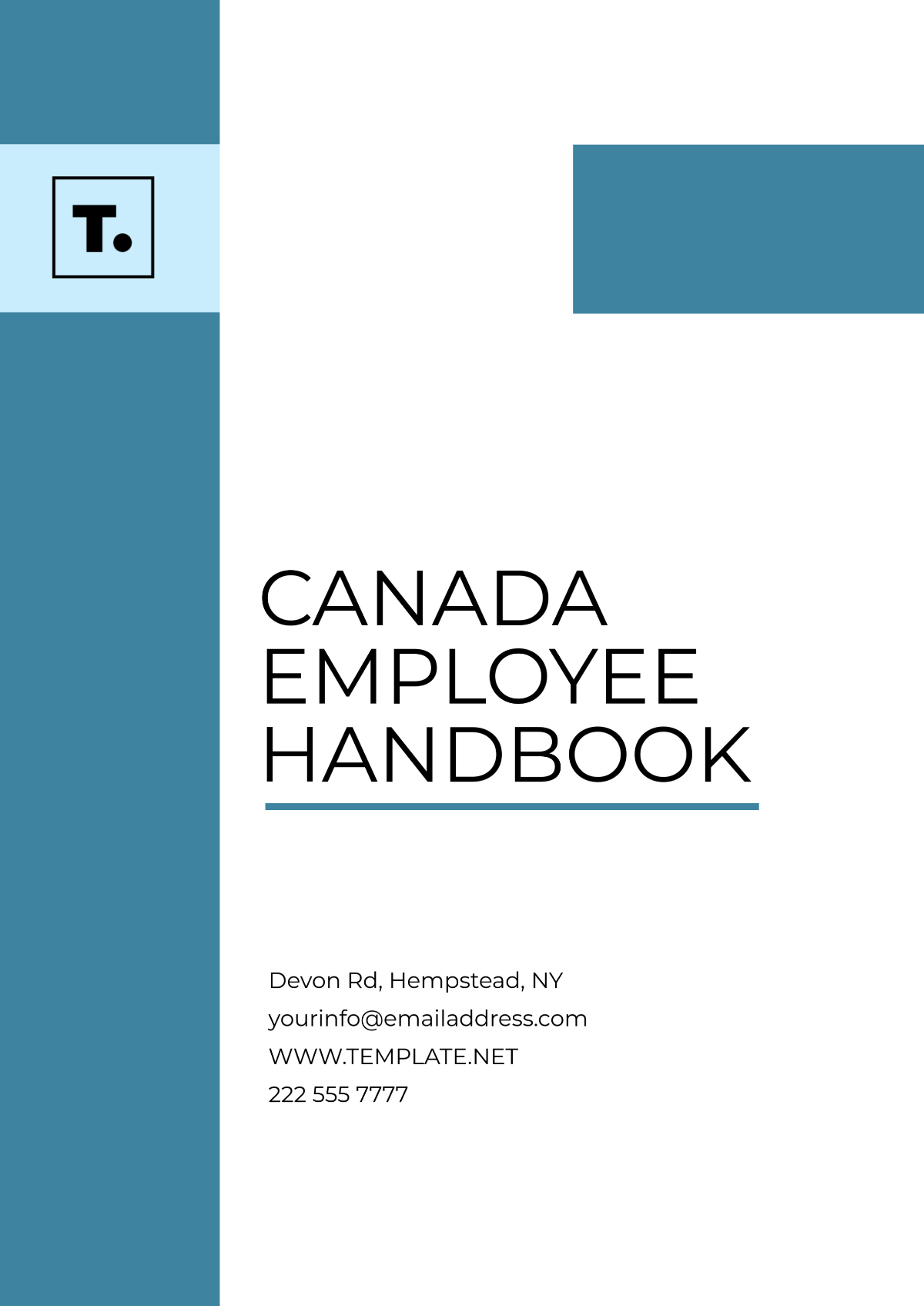Workplace Incident Response Handbook
Introduction
Welcome to the Workplace Incident Response Handbook, a comprehensive guide designed for the health and safety department. This manual is tailored to assist organizations in establishing robust procedures for effectively handling workplace incidents. The essence of this handbook is to ensure a safe, healthy, and compliant work environment for all employees.
Understanding that workplace incidents vary in nature and severity, this manual provides a structured approach to managing these situations. It is crafted to guide you through the complexities of incident reporting, response, investigation, and follow-up actions. By adhering to the guidelines outlined in this handbook, organizations can not only minimize the impact of incidents but also foster a culture of safety and awareness that is crucial for preventing future occurrences.
The handbook is divided into several key sections, each addressing a different aspect of incident management. From understanding what constitutes a workplace incident, through the intricacies of reporting and investigation, to the implementation of corrective actions and compliance with legal requirements, this guide covers all necessary bases. It is intended to be a dynamic resource, adaptable to the specific needs and circumstances of your workplace.
Section 1: Understanding Workplace Incidents
What Constitutes a Workplace Incident
A workplace incident is any unexpected event that occurs in the work environment, which could potentially lead to injury, illness, damage to property, or significant disruption of work activities. These incidents can range from minor occurrences, such as a slip on a wet floor, to major emergencies like a chemical spill.
Types of Workplace Incidents
Workplace incidents can be broadly categorized into the following types:
Physical Injuries
This includes slips, trips, falls, cuts, burns, and any other injuries that occur due to physical hazards in the workplace.
Equipment-Related Incidents:
These involve malfunctions, breakdowns, or misuse of workplace equipment, leading to potential harm or property damage.
Health-Related Incidents
Exposure to hazardous materials, poor ergonomic setups, and work-related stress fall under this category.
Security Incidents
Unauthorized access, theft, and other breaches of workplace security.
Environmental Incidents
Events affecting the workplace environment, such as fires, floods, or chemical spills.
Section 2: Incident Reporting Procedures
How to Report an Incident
Reporting a workplace incident is a critical step in the incident management process. The following are the steps to be taken for reporting an incident:
Immediate Reporting
As soon as an incident occurs, the involved or witnessing employees must report it to their supervisor or the designated safety officer.
Contact Emergency Services
If the incident is severe, like a serious injury or a large fire, contact emergency services immediately.
Complete the Incident Report Form
Fill out the Incident Report Form with details such as the time and place of the incident, a description of what happened, and the names of any witnesses. (See Appendix A for the form template.)
Incident Report Form | |
Date of Report | [Month Day, Year] |
Incident Details | |
Date and Time of Incident | [Month Day, Year, at 2:30 PM] |
Location of Incident | [Warehouse Section B] |
Type of Incident | [Equipment Malfunction] |
Description of Incident | |
Describe what happened | [Forklift malfunction led to a small pallet collapse. No injuries, but some inventory was damaged.] |
Immediate Action Taken | |
Actions taken immediately following the incident | [The area was secured, and the malfunctioning forklift was taken out of service for inspection.] |
Person Reporting | |
Name | [Your Name] |
Position | [Warehouse Supervisor] |
Contact Information | [Your Contact Information] |
Witnesses | |
Witness 1 Name | [Your Name] |
Witness 1 Contact Information | [Your Contact Information] |
Witness 2 Name | [Your Name] |
Witness 2 Contact Information | [Your Contact Information] |
Injury and Damage Details | |
Were there any injuries? | [No] |
If yes, provide details: | [N/A] |
Was there any property damage? | [Yes] |
If yes, provide details: | [Approx. 5 boxes of inventory damaged, estimated loss $500] |
Follow-Up Actions | |
Recommended follow-up actions | [Inspect all forklifts for similar issues, review equipment maintenance schedule] |
Supervisor/Manager Review | |
Name | [Your Name] |
Comments | [Ensure maintenance checks are up to date, conduct a safety briefing with all warehouse staff] |
Signature | [Your Name] |
Date | [Month Day, Year] |
Record Keeping and Documentation
Proper documentation is crucial for managing workplace incidents effectively. The following table outlines the key records to be maintained:
Document Type | Description | Retention Period |
Incident Report Forms | Detailed account of the incident, including witness statements, photographs, and any immediate actions taken. | 5 years |
Medical Reports (if applicable) | Records of any medical treatment or evaluations related to the incident. | 5 years |
Investigation Reports | Findings from the incident investigation, including identified causes and recommended corrective actions. | 5 years |
Training Records | Documentation of any training provided to employees in response to the incident. | 3 years |
These records should be stored securely and made accessible to authorized personnel only. They are vital for understanding the causes of incidents, improving workplace safety, and complying with legal and regulatory requirements.
Section 3: Initial Incident Response
Assessing the Incident
The first step in responding to an incident is to assess its severity and potential impact. This assessment should be done quickly to determine the appropriate level of response. Key aspects to consider include:
Nature of the Incident:
Identify whether it is an injury, equipment failure, environmental hazard, etc.
Immediate Risks
Evaluate any immediate risks to safety, such as fire, toxic exposure, or structural hazards.
Affected Area and Personnel
Determine the scope of the affected area and identify the personnel involved or at risk.
Immediate Action and Containment
Once the incident is assessed, immediate action should be taken to contain the situation and prevent further harm or damage.
Secure the Area
Isolate the affected area to prevent access and further injury.
Administer First Aid
Provide immediate medical attention to injured personnel, if necessary.
Activate Emergency Procedures
Depending on the incident, activate relevant emergency procedures, such as fire evacuation or spill containment protocols.
Notify Relevant Authorities
Inform emergency services, regulatory bodies, or internal emergency teams, as applicable.
Section 4: Investigation Procedures
Conducting an Incident Investigation
An effective investigation is critical to understand the cause of the incident and prevent future occurrences. The investigation should be thorough and systematic, following these steps:
Form an Investigation Team
Assemble a team with relevant expertise, including safety officers, supervisors, and technical experts.
Gather Information
Collect all available information about the incident, including incident reports, witness statements, and physical evidence.
Analyze Information
Examine the information to identify the root causes of the incident.
Develop a Report
Prepare a comprehensive report detailing the findings, causes, and recommended corrective actions.
Interviewing Witnesses
Interviewing witnesses is a crucial part of the investigation. The following guidelines should be followed:
Prepare for the Interview
Identify the witnesses and prepare questions in advance.
Conduct Interviews Promptly
Interviews should be conducted as soon as possible after the incident to ensure accuracy of recall.
Create a Comfortable Environment
Ensure that the interview setting is private and non-threatening.
Document Statements
Record the interviews accurately, either in writing or via audio recording, with the consent of the interviewees.
Investigation Report Template
The investigation report should include the following sections:
Section | Description |
Executive Summary | A brief overview of the incident and key findings. |
Incident Description | Detailed account of the incident, including timelines. |
Investigation Findings | Analysis of the causes and contributing factors. |
Recommendations | Suggested corrective actions to prevent recurrence. |
Appendices | Supporting documents, photos, witness statements, etc. |
This report should be reviewed by senior management and used as a basis for implementing corrective actions and improving workplace safety protocols.
Conclusion
This Workplace Incident Response Handbook serves as an essential resource for managing workplace incidents effectively and efficiently. By following the procedures and guidelines outlined in this manual, organizations can ensure a prompt and appropriate response to incidents, thereby safeguarding the well-being of employees and the integrity of the workplace.

















































